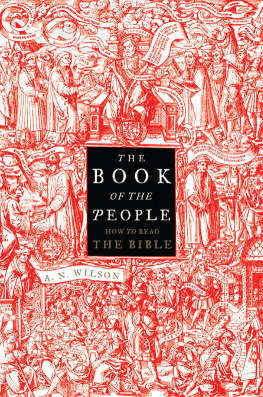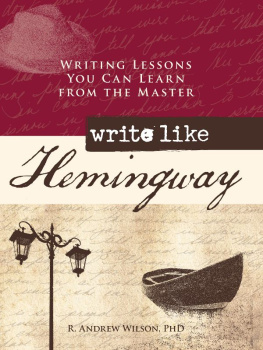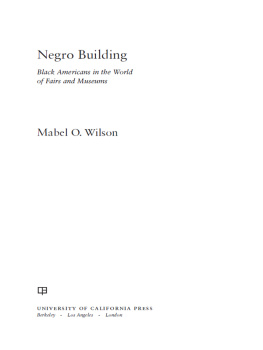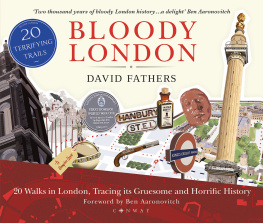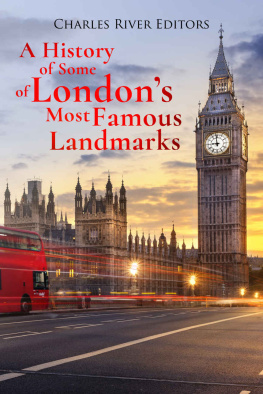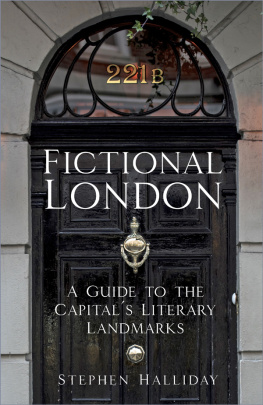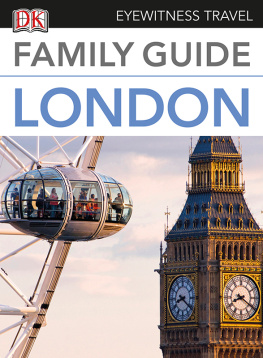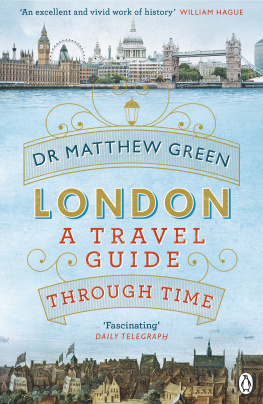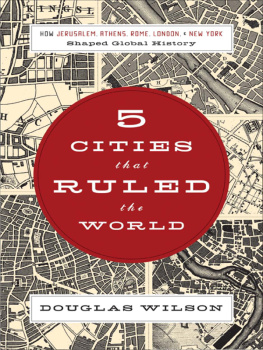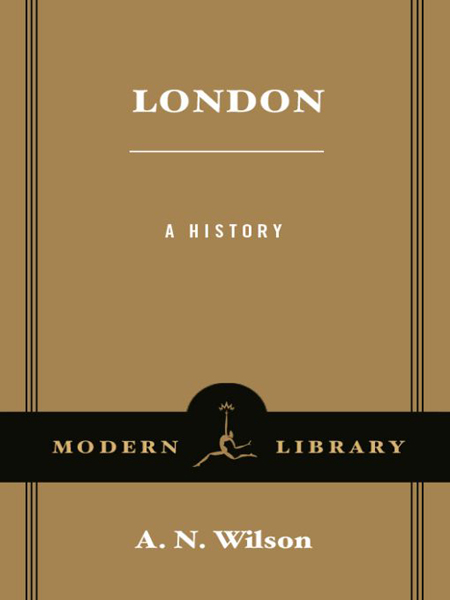
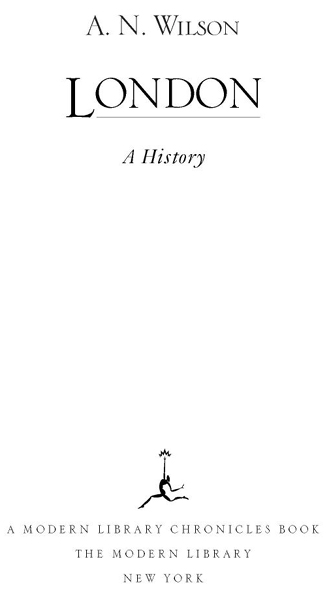
Table of Contents
TO Peter Ackroyd
Modern Library Chronicles
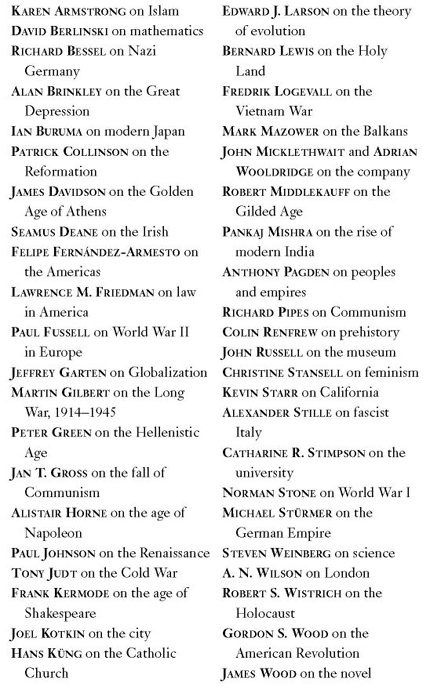

PRELUDE: A LONDON HISTORY
One of the best ways to see London, at once and as a whole, is to climb Hampstead Heath and look down from Parliament Hill. On a clear day, from this northern vantage point, the eye can stretch across the teeming, chaotic expanse, taking in familiar landmarks, such as the winking giant tower of Canary Wharf to the east, or the dome of St. Pauls directly ahead, or, to the west, the Palace of Westminster and the Abbey. From this height, we see the northern conurbations of Kentish Town and Camden Town immediately beneath us, we see Regents Park dotted with trees, and Hyde Park and, far beyond, south of the river, we can look to the suburban sprawl of south London, its terraced houses, its villas, its tower blocks, its churches and cinemas.
What we are looking at is not a city which has been built according to one uniform plan. Here is no grid of numbered streets as in New York, no architectural homogeneity as in St. Petersburg, no rigidly pure urban plan as in post-Napoleonic, post-Haussmann Paris. We see, rather, a group of boroughs, former villages, bursting with life and vigor, but existing in barely controlled social and architectural chaos. From where we stand, with the natural beauties of the Heath behind us, we see little of beauty. This is not one of the great city views of the world, such as we might take in from the Pincio or Fiesole when gazing upon Rome or Florence. Little that we look upon would seem to have been planned. The two great centers of old Londonthe City of London itself, the square mile, in the east; and the city of Westminster, to the westare distinct, even today. The villages, swollen to boroughs, which surround and join them by a multitude of overcrowded, trafficky streets, all have their own identity and history.
The history of London is therefore by its very nature a collective history, a kaleidoscope of many stories rather than a book with one author or one theme. Moreover, because of the size and fluidity of Londons population, because of its constant change and growth, much of its story is hidden from us. Workmen gouging out the earth for a new building can suddenly unearth for us evidence of a lost London, the outlines of an old theater where Shakespeare acted, the conduit of a medieval waterway, or paving of Roman times. Sentiment will always be stirred by such discoveries and, in some cases, the few fragments of a forgotten past will be preserved or reclaimed by archaeology. One suspects that there have been many more cases in the history of Londons construction industry when, to avoid delays on the new building, the pick or the electric drill has merely obliterated the vestiges of the old in order to make way for the new.
Most London history, like the lives of most Londoners, has passed into oblivion, and what we choose to recover of it, especially in so short a study as this, will be arbitrary. Even as we stand here on Parliament Hill, looking down on the London of the twenty-first century, we become aware of how much is concealed, how much has gone forever. We can see the physical properties of London geography, for example. From this height we can see that the cluster of conurbations which we call London grows up on and around a group of low hills: but although we catch a glimpse of silver sunlight on the great Thames, which snakes between the gray buildings, we see nothing of the rivers and streams that once flowed down from its hills: the Wandle and the Effra, still visible in south London; the Walbrook running through Shoreditch, through the City and down to the Thames; the Tyburn, rising in Belsize Park and flowingno moredown Haverstock Hill, through Regents Park and on, beneath Buckingham Palace. These streams, like the stories of millions of dead Londoners, are now lost to us, hidden from view, dried up or, like the Fleet river, gone underground.
The Fleet, another tributary of the Thames, had its origin in the Hampstead ponds of Caen Wood, or Kenwood, just behind where we stand on Parliament Hill looking down on present-day London. Were we to follow the course of the Fleet, almost every phase of London history would unfold before us.
The western head of the Fleet rose in the Vale of Health (said to derive its name from being unaffected by the Great Plague of 1665), the eastern in the park of what is now Kenwood House. These parts of London, grassy and wooded, remind us of how, until Victorian times, there was an edge, an ending to Londons urban sprawl, which was truly rural. When Mr. Pickwick and his friends speculated on the source of the Hampstead Ponds, they were talking not of a rich suburb but of a country village.
Even as late as the 1840s the Fleet, in passing Kentish Town and Gospel Oak, was a stream in open country. The Gospel Oak was so named because preachers once spoke beneath its boughs. Tradition has it that St. Augustine himself, bringing the faith from Rome in the very late sixth century, was the first such evangelist. We do not know whether that is true, or whether he laid the altar stone of what is one of the oldest churches in England, old St. Pancras. (Some say this church, on the banks of the Fleet river, dates from as early as A.D. 313 or 314.) The Fleet, like the story of London itself, is by now subterranean: it crosses under the Regents Canal and at points is buried as deep as twenty-five feet. By the time it flowed south of St. Pancras Church it had surfaced again. The district known as Battlebridge derived its name from a single-tracked brick structure crossing the Fleet.
Which battle the name commemorates, no one knows. The tradition that it marks the spot of Boadiceas last stand against the Romans is fanciful, as is the conjecture believed by some Londoners that that redoubtable warrior lies deep beneath the ground of what is now Platform Seven at Kings Cross Station. In 1830, when George IV died, the inhabitants of Battlebridge erected an octagonal building decorated with pilasters to commemorate that not always popular king. It was completed by about 1836. Some called it, by virtue of the weather vane cross on its roof, Boadiceas Cross, others St. Georges Cross, and others still, perhaps unaccountably attributing sanctity to the departed Hanoverian, Kings Cross. A stucco statue said to resemble this monarch was seen above its doorway. No obvious purpose for the octagon was found. It was used as a police station, then as a pub, then as a camera obscura. With the coming of the railways, the building was found to be in the way and it was demolished in 1845. Kings Cross had been in existence for less than ten years, but it has ever since given its name to one of Londons seediest parts.
The Fleet crossed what is now Kings Cross Road and flowed down towards the Farringdon Road. In this part of its journey, it was called the Hol-bourne or Healing Stream. It was also known as the River of Wells. In its journey from Hampstead to Kings Cross, the Fleet has reminded us that London is a collection of villages and towns which until the Railway Age was adjacent to, and indeed part of, open country, farmland. It has reminded us of Londons Roman origin and its very ancient Christian past. It has symbolized, by vanishing, the extent to which the railway age, with its concomitant industrialization and overpopulation, changed London forever, destroying and hiding much of its distinctive and lingering past. But as we follow the River of Wells towards the Thames, we meet other aspects of London history. At Lambs Conduit, which linked the Holborn (Fleet) to a little stream, we are reminded of the wealth of the guilds in the Tudor Agefor it was William Lamb, of the Guild of Clothworkers (Gentleman of the Chapel to Henry VIII), who built this little waterway, once thick with watercress, to irrigate the neighborhood. At nearby Clerkenwell, we remember an earlier London which the Tudor merchants opposed and changed for by this
Next page

